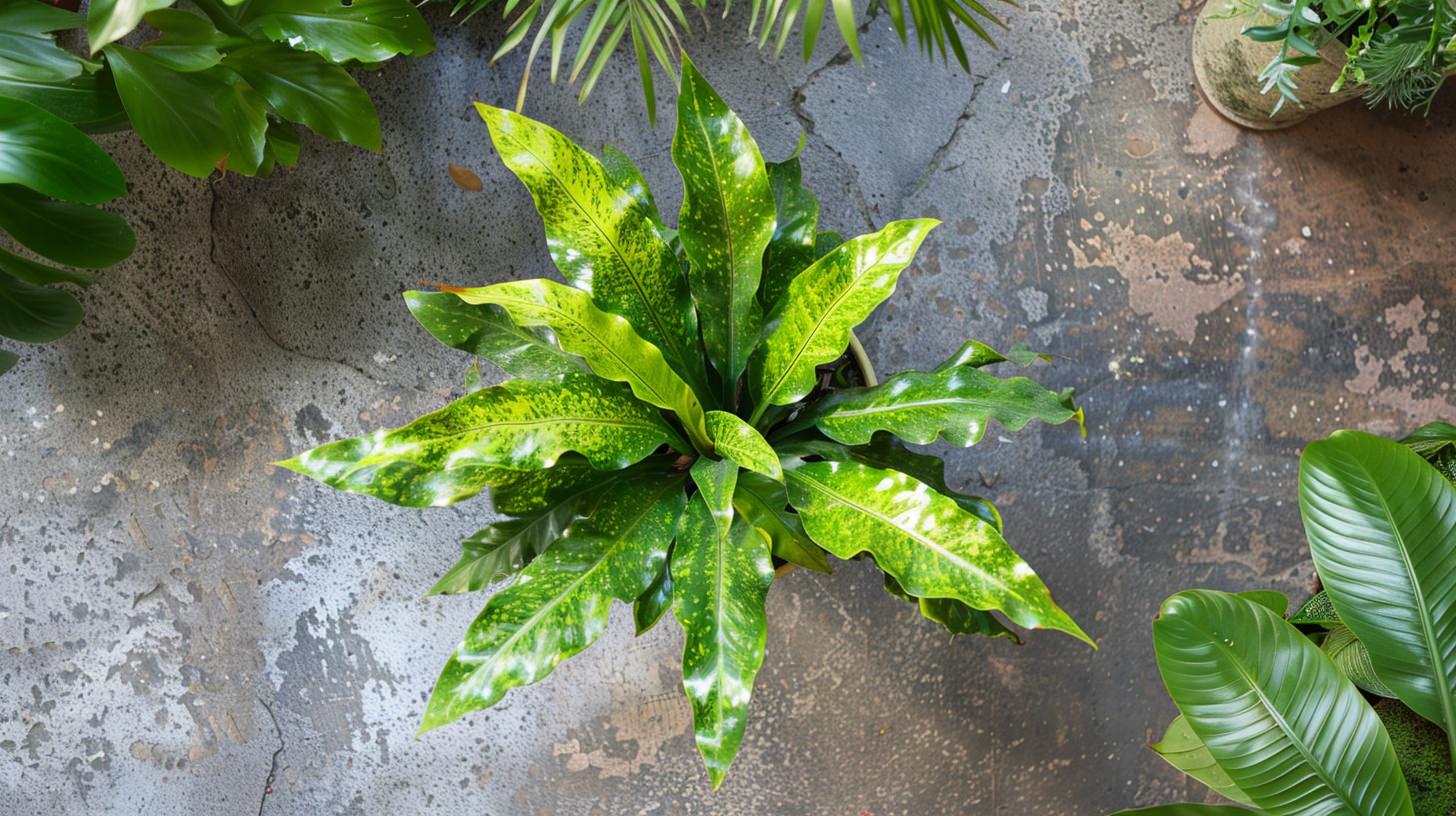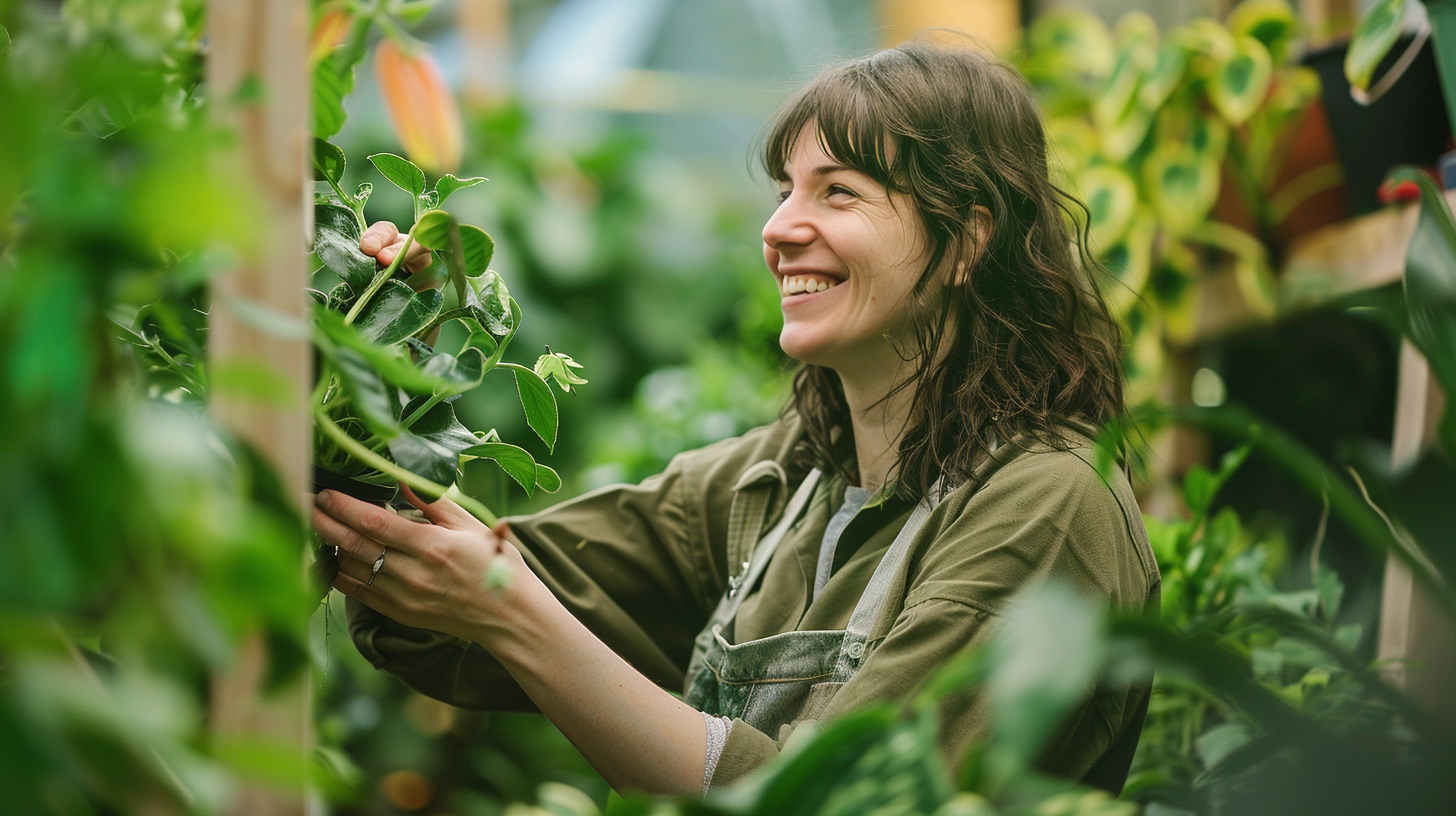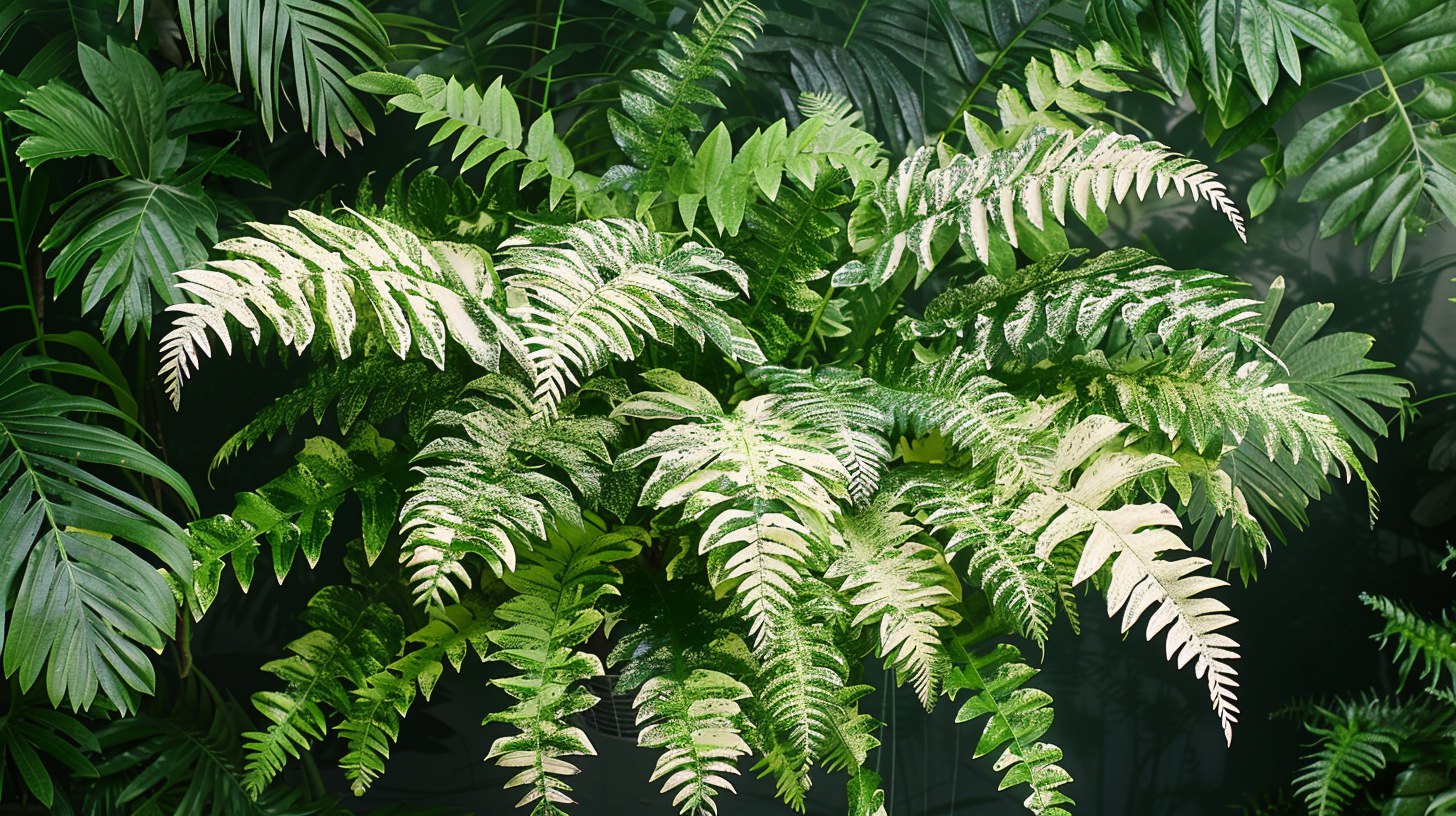
Artistic plant photography techniques for social media have revolutionized the way we appreciate and share the beauty of nature in the digital age. With the growing popularity of social platforms as a creative outlet, mastering the art of capturing and showcasing mesmerizing plant images has become a captivating endeavor for photographers and plant enthusiasts alike. From lighting tricks to composition strategies, this blog post delves into the dynamic world of botanical photography, offering valuable insights and tips to elevate your plant photography game and engage your audience on social media channels. Get ready to explore a lush landscape where artistry meets technology, bringing the enchanting world of plants to life in pixels and likes.
Mastering Lighting Techniques for Captivating Plant Photos
Capturing striking plant photos requires more than just a good camera and a beautiful subject. Lighting plays a crucial role in creating captivating and artistic plant images that are perfect for sharing on social media. In this section, we will delve into the key lighting techniques to master for exceptional plant photography.
Natural Light vs. Artificial Light: Understanding the Difference
When it comes to plant photography, understanding the distinction between natural light and artificial light is essential.
Natural Light:
- Natural light provides a soft and diffused illumination that enhances the natural beauty of plants.
- Best times to shoot with natural light include early morning and late afternoon when the light is warmer and softer.
- Position your plants near windows or outdoor areas to make the most of natural light.
Artificial Light:
- Artificial lighting, such as studio lights or LED panels, allows for more control over the lighting environment.
- Experiment with different artificial light sources to create unique effects and highlights in your plant photos.
- Consider investing in a lighting kit for professional-quality results.
Using Reflectors and Diffusers for Balanced Lighting
Reflectors and diffusers are essential tools for manipulating light and achieving balanced lighting in your plant photography.
Reflectors:
- Reflectors bounce light back onto the plants, filling in shadows and creating a more even lighting effect.
- Use white, silver, or gold reflectors to adjust the intensity and warmth of the light.
Diffusers:
- Diffusers soften harsh light and reduce glare, resulting in a more natural and flattering look.
- Place a diffuser between the light source and your plants to create a gentle, diffused lighting effect.
Harnessing the Power of Side Lighting for Dramatic Plant Portraits
Side lighting can add depth, drama, and dimension to your plant photos, making them visually engaging and dynamic.
Tips for Side Lighting:
- Position your light source to the side of the plants to create shadows and highlights that emphasize textures and shapes.
- Experiment with different angles and intensities of side lighting to achieve the desired mood and ambiance in your photos.
By mastering these lighting techniques and incorporating them into your artistic plant photography, you can elevate your social media content and engage your audience with visually stunning plant images.
Learn more about advanced lighting techniques from Nikon’s lighting guide.
Utilizing Composition Tips to Enhance Your Plant Photography
Composition is a critical element in creating visually captivating plant photos that stand out on social media. By applying key composition techniques, you can enhance the artistic quality of your plant photography and engage your audience effectively.
Rule of Thirds: Creating Balanced and Harmonious Shots
The rule of thirds is a fundamental principle of composition that involves dividing your frame into a grid of nine equal sections using two horizontal and two vertical lines. By placing key elements along these lines and intersections, you can achieve a more balanced and visually pleasing composition.
- Position the focal point of your plant photo at the intersection points for a dynamic composition.
- Use the gridlines to align the horizon or key elements in your image for better balance and harmony.
Leading Lines: Guiding the Viewer’s Eye Through the Image
Leading lines are powerful compositional tools that help guide the viewer’s eye through the image towards the focal point. Incorporating natural lines or creating leading lines within your plant photos can add depth and visual interest.
- Utilize natural lines, such as stems, leaves, or branches, to lead the viewer’s gaze towards the main subject.
- Experiment with diagonal, curved, or converging lines to create dynamic compositions that draw attention to your plants.
Negative Space: Emphasizing the Subject Through Minimalism
Negative space, the empty space around the main subject in an image, can be used creatively to emphasize and highlight the subject. When photographing plants, incorporating negative space can create a sense of simplicity and elegance.
- Leave empty space around your plants to draw focus and attention to their details and beauty.
- Use negative space to create a sense of tranquility and sophistication in your plant photos.
Implementing these composition tips in your artistic plant photography for social media will help you create visually compelling images that resonate with your audience and enhance your online presence. Experiment with these techniques to elevate your plant photography to a new level of creativity and engagement.
Editing and Enhancing Plant Photos for Social Media Engagement
After capturing stunning plant photos using artistic techniques, the next step is to edit and enhance your images to make them truly stand out on social media platforms. Effective editing can elevate the visual appeal of your plant photography and increase engagement with your audience.
Selective Editing with Lightroom: Enhancing Colors and Details
Adobe Lightroom is a powerful editing tool that allows you to enhance colors, adjust lighting, and refine details in your plant photos with precision.
- Use the “HSL/Color” panel to adjust the individual hues, saturation, and luminance of colors in your photos for vibrant results.
- Utilize the “Clarity” and “Sharpness” tools to enhance the details of plant textures and create sharper, more defined images.
Applying Filters and Presets: Adding Style and Consistency
Filters and presets can add a unique style and consistency to your plant photography, making your images instantly recognizable on social media feeds.
- Explore preset collections or create your own signature style using Lightroom presets for a cohesive and polished look.
- Experiment with different filters to achieve a specific mood or aesthetic that complements your plant subjects.
Cropping and Framing Techniques: Emphasizing Composition and Focus
Cropping and framing play a crucial role in highlighting the composition and focus of your plant photos, directing the viewer’s attention to key elements within the frame.
- Use the rule of thirds or golden ratio to guide your cropping decisions and achieve well-balanced compositions.
- Experiment with different aspect ratios and framing styles to create visual interest and draw the viewer into your plant photos.
Exporting for Social Media: Optimizing Image Quality and Format
Before sharing your edited plant photos on social media, it’s essential to optimize them for online platforms to ensure optimal image quality and fast loading times.
- Resize your images to the recommended dimensions for each social media platform to avoid compression and distortion.
- Save your images in web-friendly formats like JPEG or PNG to maintain quality and compatibility across various devices.
By employing these editing and enhancing techniques in your artistic plant photography workflow, you can create captivating images that resonate with your audience on social media, showcase your creativity, and establish a strong visual presence online.
Engaging Your Audience with Artistic Plant Photography on Social Media
Sharing your artistic plant photography on social media platforms is a wonderful way to connect with a larger audience, showcase your creativity, and inspire others with the beauty of nature. Here are some tips to maximize engagement and impact with your plant photos on social media.
Understanding Your Audience: Tailoring Your Content to Their Preferences
Before posting your plant photos on social media, take the time to understand your audience’s interests, preferences, and demographics. Tailoring your content to resonate with your audience will increase engagement and foster a deeper connection with your followers.
- Conduct audience research to identify the types of plant photos that resonate most with your audience.
- Analyze your social media analytics to track engagement levels and adjust your content strategy accordingly.
Consistent Posting Schedule: Maintaining a Regular Presence
Consistency is key when it comes to engaging your audience on social media. Establishing a regular posting schedule for your plant photos can help maintain audience interest, increase visibility, and foster a sense of anticipation among your followers.
- Create a content calendar to plan your posts and maintain a consistent posting frequency.
- Experiment with different posting times to identify the optimal times when your audience is most active and engaged.
Encouraging Interaction: Sparking Conversations and Engagement
Engaging your audience goes beyond simply sharing photos—it also involves encouraging interactions, sparking conversations, and building a sense of community around your plant photography.
- Pose questions or prompts in your captions to encourage comments, shares, and discussions among your followers.
- Host photo challenges, giveaways, or interactive polls to involve your audience and foster a sense of participation.
Utilizing Hashtags and Tagging: Increasing Visibility and Reach
Hashtags and tagging are powerful tools for increasing the visibility and reach of your plant photos on social media platforms. By strategically using relevant hashtags and tagging relevant accounts, you can expand your audience reach and attract new followers.
- Research popular plant photography hashtags and include them in your posts to reach a larger audience interested in botanical photography.
- Tag relevant plant-related accounts, brands, or influencers in your posts to increase visibility and potentially attract collaborations or features.
By implementing these strategies and techniques in your artistic plant photography efforts on social media, you can effectively engage your audience, enhance your online presence, and share the beauty of plants with a wider community of nature enthusiasts.
Leveraging Social Media Platforms for Artistic Plant Photography
With the rise of social media platforms as primary channels for sharing visual content, mastering the art of showcasing your artistic plant photography is essential for reaching a broader audience and establishing a strong online presence. Here are some platform-specific strategies to optimize your plant photography for social media engagement.
Instagram: Visual Storytelling Through Grid Layouts
Instagram is a visual-centric platform that thrives on captivating imagery and engaging storytelling. Utilize the following strategies to maximize the impact of your plant photography on Instagram:
- Curate a cohesive and visually appealing grid layout that showcases your plant photos in a harmonious and aesthetically pleasing manner.
- Experiment with Instagram Stories and Reels to add dynamic and interactive content that complements your static plant photos.
- Engage with your audience through thoughtful captions, behind-the-scenes content, and interactive features like polls and Q&A sessions.
Pinterest: Creating Inspirational Mood Boards and Collections
Pinterest is a powerful platform for discovery and inspiration, making it an ideal space to showcase your artistic plant photography and reach a highly engaged audience. Consider the following tips for leveraging Pinterest effectively:
- Create themed boards featuring your plant photos to inspire and evoke emotion in viewers searching for botanical inspiration.
- Optimize your pins with descriptive titles, keywords, and relevant hashtags to increase visibility and attract organic traffic to your photography.
- Collaborate with other content creators, plant enthusiasts, or brands to expand your reach and connect with like-minded individuals in the Pinterest community.
Facebook: Building Community and Engagement Through Groups
Facebook offers a robust community-building feature through Groups, making it an excellent platform for connecting with fellow plant lovers, sharing tips, and fostering conversations around your plant photography. Maximize your presence on Facebook by implementing the following strategies:
- Join plant-related Groups to network with other enthusiasts, share your photography, and participate in discussions about plant care, photography techniques, and botanical trends.
- Create a dedicated Facebook Page for your plant photography portfolio, where you can showcase your work, engage with followers, and promote upcoming projects or collaborations.
- Host live events, workshops, or virtual tours to interact with your audience in real-time, share insights into your photography process, and provide valuable content that resonates with your community.
By tailoring your artistic plant photography techniques to the unique features and audience preferences of each social media platform, you can effectively amplify your reach, engage with a diverse audience, and cultivate a vibrant online presence that celebrates the beauty of plants in all their artistry and splendor.
FAQs
Can I use my smartphone for artistic plant photography for social media?
Absolutely! Smartphone cameras have evolved significantly, offering advanced features and high-quality lenses that can capture stunning plant images. With the right techniques and editing tools, you can achieve professional-looking plant photos for social media platforms.
How can I make my plant photos stand out on crowded social media feeds?
To make your plant photos stand out, focus on unique perspectives, creative compositions, and captivating lighting. Experiment with different angles, backgrounds, and editing styles to create visually striking images that grab the attention of your audience.
Is it necessary to invest in expensive camera equipment for plant photography?
While professional camera gear can enhance the quality of your plant photos, you can achieve impressive results with a smartphone or entry-level camera. The key lies in mastering photography techniques, lighting, and editing skills to elevate your plant photography for social media.
What are the best times of day to shoot plant photos for social media?
Early morning and late afternoon are ideal times for capturing plant photos due to the soft, golden light that enhances textures and colors. Avoid harsh midday sunlight and experiment with different lighting conditions to discover what works best for your plant photography.
How can I engage with my audience using my plant photos on social media?
Engaging with your audience involves more than just posting photos. Encourage interaction by asking questions, hosting giveaways, sharing behind-the-scenes stories, and responding to comments. Building a connection with your followers through authentic engagement will make your plant photography even more compelling on social media.

